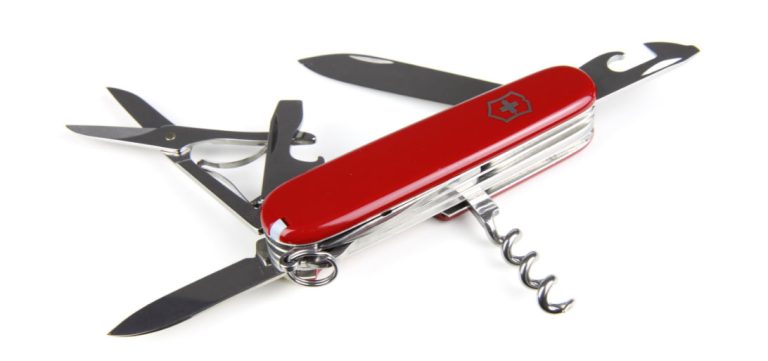SOVTs are the Swiss Army knife of voice training – a versatile tool that can be used in all sorts of scenarios, says vocal coach Oren Boder.
One is a favoured gadget of Boy Scouts and campers; the other is a form of vocal exercises with a fancy name.
While the link between a Swiss Army knife and semi occluded vocal tract (SOVT) exercises may not jump out at you at first, listen to Oren Boder on the latest episode of Singing Teachers Talk, and it will soon make sense.
Oren is a singer, vocal coach and engineering buff who designed the SOVT Singing Straw – an adjustable straw device with a telescopic body and more than 12 resistance modes.
What does SOVT mean?
We’ll let Oren explain. “SOVT is just a super fancy way of saying that there is some kind of partial closure of the vocal tract at any point above the vocal folds,” he says.
“When we talk about partial closure, we don’t mean a blockage specifically. We’re talking about manipulating either the position of the tongue or the lips, or using a straw, to allow a little bit of air to flow out, but not as much as you would usually if you’re singing. And so, by doing this process of semi occluding, you intuitively get an idea of what’s going on.”
In other words, SOVTs are a great vocal training tool. And you can use different SOVTs depending on what you are trying to achieve.
There are many different types of SOVTs, including lip trills, tongue trills and voiced fricatives, but it probably comes as no surprise that straw exercises are Oren’s favoured option.
In terms of the straw, Oren says: “We can use it therapeutically or athletically depending on how we want to train the voice. So it’s kind of like a Swiss Army knife of techniques that can assist us in whatever we want to do as singers.”
Getting the most out of SOVTs
In the podcast, Oren discusses sub-glottal and phonation threshold pressure and what they mean in relation to SOVTs (17:55 minutes in). (If you usually scratch your head when you come across terminology like this, listen to Oren’s explanation. He has the knack of making complicated concepts easy to understand).
And he also delves into how singing teachers can tailor straw exercises to suit students’ needs. The more a teacher knows about SOVTs, the better, as it’s important to make sure that what the singer is doing is safe.
“We never want to train in the extremes because we’re going to be either overloading the voice or unloading the voice, and neither a particularly good,” Oren says.
“The crucial thing to keep in mind is if something doesn’t feel comfortable, don’t do it. In terms of comfort, if something feels a little bit strange, a little bit funny, you’re probably still within your good zone.
“But if it really doesn’t feel comfortable, then don’t do it.”
LISTEN
WATCH
BAST members can log in and watch our educational video Going Deep On Semi Occluded Vocal Tract Exercises. If you’re not a member, you’ll find the video here.




